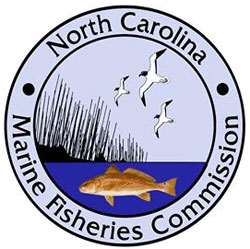
A half-dozen public health, environmental and environmental justice groups are demanding a federal response to alleged corporation negligence in handling chemical compounds that they say are poisoning residents of the Cape Fear region.
The Center for Environmental Health, Cape Fear River Watch, Clean Cape Fear, NC Black Alliance, Democracy Green and Toxic Free NC filed Wednesday a petition demanding that the Environmental Protection Agency address per- and polyfluoroalkyl substances, or PFAS, pollution in communities downstream of the Chemours Co.’s Fayetteville Works site along the Cape Fear River.
Supporter Spotlight
The organizations urge in the petition that the EPA require Chemours to fund comprehensive health and environmental effects testing on 54 substances manufactured at the company’s Fayetteville Works facility.
The EPA under the Toxic Substances Control Act has authority to order manufacturers like Chemours to determine the safety of their products and processes. Under the act, EPA has 90 days to respond to the petition. If the petition is denied, the law allows the groups to take EPA to court.
“All people have the right to clean air, clean water, pollution-free, and thriving vibrant communities. At NC Black Alliance, we are standing as plaintiffs in this case because we know the grave impact it has held on communities-of-color,” La’Meshia Whittington, campaigns director with the NC Black Alliance, said in a statement.
Whittington said the effects are apparent in that 56% of residents living within a 2-mile radius of toxic waste facilities are people of color and that the cumulative impact and dangers of PFAS on low-wealth communities and communities of color are immeasurable.
“These same neighborhoods that face major hurricanes and other storm systems, are the same neighborhoods facing the direct impact of health disparities exacerbated by PFAS, not to mention, this pandemic,” Whittington said.
Supporter Spotlight
A Chemours spokesperson said Wednesday that the company continues to act to decrease the amount of PFAS reaching the Cape Fear River.
“A new system to capture and treat one of the pathways at the site began operation on September 30, 2020, and under the agreed Consent Order Addendum, we will take a number of measures to address PFAS loadings from other pathways, including onsite groundwater to the Cape Fear River. We encourage all other sources of PFAS in the State of North Carolina to take similar actions to improve river quality,” Lisa Randall of Chemours said in a statement.
The groups said their petition builds on existing scientific understanding of the properties of PFAS. The proposed testing includes studies in laboratory animals as well as research into the relationship between health outcomes and PFAS exposure among people in Cape Fear communities. Studies to determine effects on fish and how the PFAS behave in the environment would also be conducted.
“CEH believes that chemical manufacturers should be required to test their products for safety, make that data public, and choose safer alternatives. For many years, Chemours was allowed to release PFAS chemicals into the air and water from its Fayetteville facility, without being required to test for safety. As a result, people who live adjacent to and downstream from the plant have been exposed to a mixture of these toxic PFAS chemicals. The community has the right to know what adverse effects these chemicals may be having on their families’ health. This petition will hold Chemours accountable for the risks it took with human health and the environment,” said Michael Green, Chief Executive Officer, Center for Environmental Health, in a statement.
The chemicals have been found in human blood, drinking water, groundwater, soil, air and locally produced food adjacent to and downstream of the plant as a result of emissions and discharges spanning decades and take centuries to break down.
“As a toxicologist who tries to understand how PFAS exposure affects the immune system, it’s surprising to me that more data aren’t available on their health effects. PFAS have been produced and used for decades but the data we have are limited to just a handful of the thousands of PFAS that we know are in the environment, in drinking water, and in our bodies. PFAS don’t break down, they move from place to place, they accumulate in living organisms, and the ones we’ve studied show adverse health effects. Additional testing is essential to understand if the health of people who have been exposed to PFAS emitted by the Chemours facility is being affected,” said Jamie DeWitt, associate professor, Pharmacology & Toxicology, East Carolina University.
“We should have had test data on these 54 PFAS before they could be used – now they are in our environment and in us and we do not know if they are safe,” Linda S. Birnbaum, former director of the National Institute of Environmental Health Sciences and National Toxicology Program and scholar in residence at Duke University, said in a statement.







